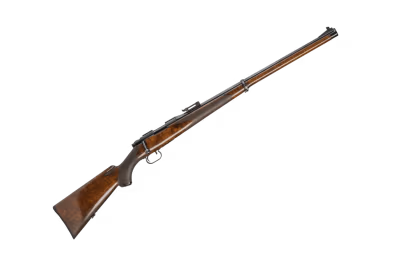
In the annals of firearm history, the Sako L46 enjoys a revered position, embodying the perfect amalgamation of precision, durability, and craftsmanship. Born from the workbenches of Suojeluskuntain Ase- ja Konepaja Oy—better known as Sako—this Finnish-made bolt-action rifle has served as a gold standard for sporting and varmint shooting. With a legacy spanning decades, the L46 is not merely a gun; it is a testament to Finnish engineering and a study in the tradition of firearms that blends functionality with aesthetic brilliance.
The Origins: Finnish Heritage and a Commitment to Quality
To understand the prominence of the Sako L46, one must first delve into the roots of Sako itself. Established in 1921, the Finnish company initially specialized in producing parts for military firearms. Over time, however, Sako expanded its portfolio and ventured into the sporting arms market. This shift heralded the arrival of a new era of innovation, culminating in the creation of the L46 in the late 1940s.
The L46 was born from a lineage of excellence, as Sako had already gained significant reputation for its work on rifles like the L42 and the M39 used during the Second World War. Yet, the L46 marked a departure from military utility to a focus on sporting applications, particularly varmint and small game hunting. It showcased Sako’s commitment to quality and accuracy, all encapsulated in a bolt-action rifle designed for the modern user.
Design and Features: The Anatomy of Precision
A bolt-action rifle chambered primarily for the .222 Remington, .22 Hornet, and later for other small calibers like .218 Bee, the L46 is a marvel in terms of its architecture. Featuring a three-lug bolt design, it allows for a short 60-degree bolt throw, enhancing both the speed and the comfort of operation. The rifle comes with a detachable magazine, which lends itself to quick reloading—an invaluable asset in the field.
The barrel, typically around 23 to 24 inches in length, is a high point in the L46 design. It contributes to the gun’s exceptional accuracy and is crafted to exacting tolerances. Adding to its allure, the stock of the L46 is usually made of high-quality walnut wood, lending a sense of tradition and elegance to the weapon. The checkered pattern on the stock not only adds to the rifle's visual charm but also provides a better grip.
Performance: Beyond the Firing Range
When it comes to the performance domain, the L46 has been heralded for its pinpoint accuracy. The rifle's quality of manufacturing allows for a minimal "lock time," which is the time between the trigger pull and the firing pin striking the primer. This translates into better accuracy, as it minimizes the chance for user error in aiming.
Many experts in the field have noted that the Sako L46 is exceptionally reliable. Whether it is the unforgiving terrains of the Scandinavian forests or the expansive stretches of the American Midwest, the rifle has been reported to function seamlessly, largely free from the maladies of jamming or misfiring.
Collectability and Market Value
The Sako L46 is not just a rifle; it is a collectible piece of history. As production for this model has long ceased, existing specimens have gained significant market value. The original models, especially those in good condition, are highly sought after by collectors and can fetch impressive prices at auctions.
Conclusion: The Lasting Legacy of the Sako L46
In the constellation of firearms, the Sako L46 shines as one of the brighter stars, illustrating what can be achieved when engineering prowess meets a commitment to quality. It’s a weapon that transcends its primary function, entering the realm of art and heritage. From its origins in post-war Finland to its current status as a coveted collectible, the Sako L46 has traced a remarkable trajectory, enshrining itself as a timeless symbol of precision and craftsmanship. With a longstanding legacy and a dedicated following, this bolt-action rifle serves as an enduring testament to the genius of its creators, standing as an exemplar in the annals of firearms history.
Read more about Sako here.
If you know of any forums or sites that should be referenced on this listing, please let us know here.




